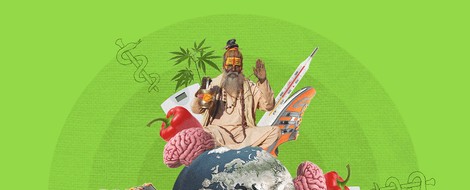Your podcast discovery platform
Curious minds select the most fascinating podcasts from around the world. Discover hand-piqd audio recommendations on your favorite topics.

piqer for: Health and Sanity Global finds
I was born in 1987 in Bucharest. I studied Psychology and Educational Sciences at the University of Bucharest. For two years I worked in a psychotherapy practice, dealing with gambling addicts. I'm an independent reporter, writing and doing video reportages mostly about social and political issues. I am currently based in Jena.
How Depression Treatment Might Look
The other day, I was out with some friends and a new guy, who was in the city for a few days for work. One of my friends has been suffering from depression for quite a while now, and lately she hasn’t been well at all. As she got up to take care of the bill, she started doing pirouettes and playing with her black dress. “Neah, she’s not depressed,” the new guy said.
This article starts off by explaining that people who suffer from depression can show symptoms differently: “One might be putting on pounds and sleeping much of the time, whereas another might be losing weight, feeling anxious and finding it difficult to sit still." But the way depression is seen now - as necessarily causing people to have a low mood and be gloomy - has repercussions on both diagnosing the illness and offering treatment for it.
Usually, the diagnosis of depression is given when the person presents a set of symptoms, and the treatment consists of different kinds of anti-depressants and therapy. Conor Liston, a neuroscientist and psychiatrist at Weill Cornell Medicine, and his colleagues, focused on neurobiology and set out to find “biomarkers for depression - toxic free radicals, the stress hormone cortisol and even epigenetics (environmental triggers that switch genes on and off).”
Although the study Liston and co. published in December still needs additional studies to support its findings, what they did using the resting-state fMRI to check for differences in brain connectivity between depressed and healthy people is groundbreaking for at least two reasons. First of all, they identified four subtypes of depression, which means that, in the future, patients will be able to receive more accurate diagnoses and treatment. Some of the patients could be taken off the drugs that don’t work for them, and new methods of dealing with the particular symptoms that they have could be invented.
